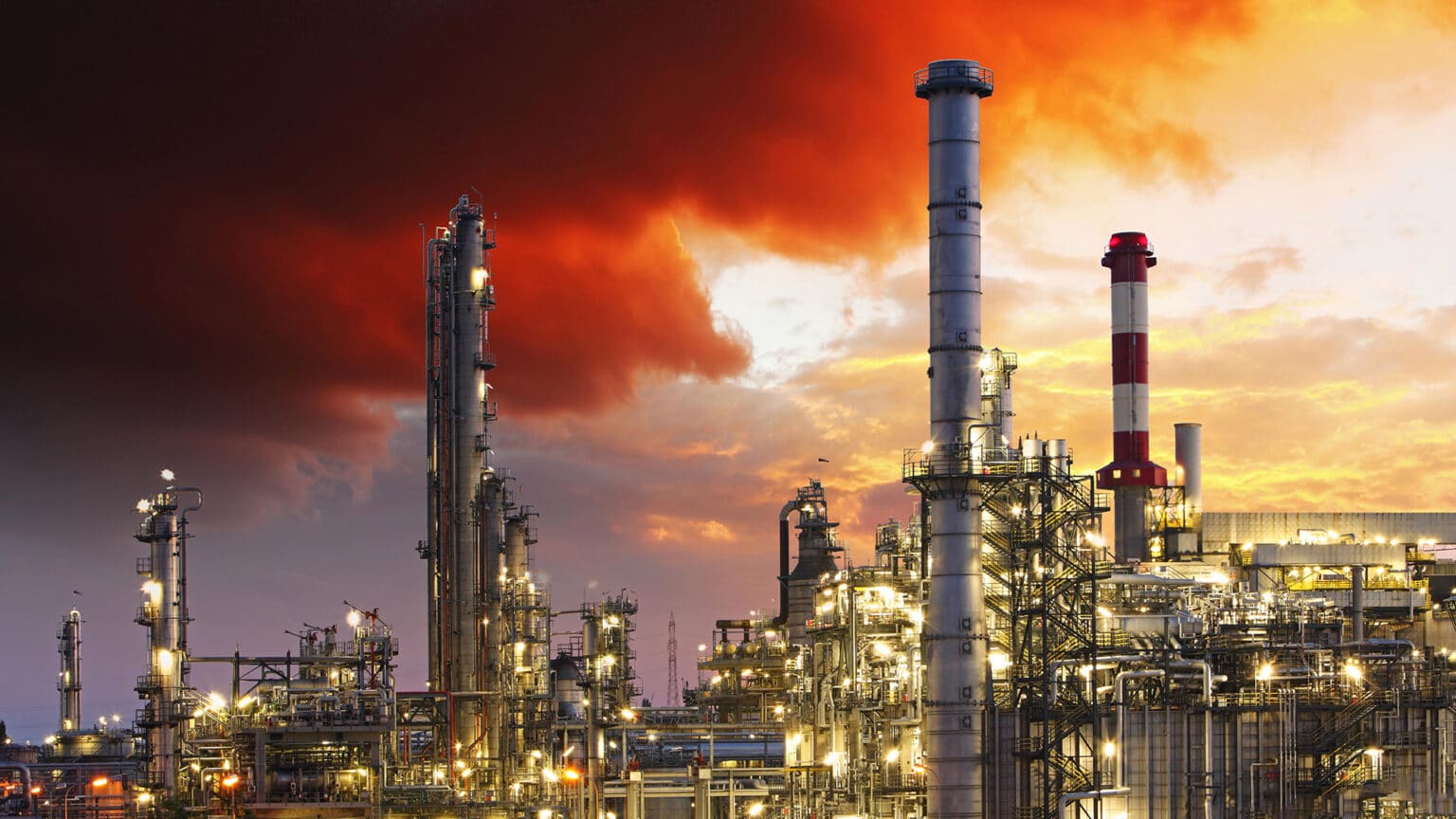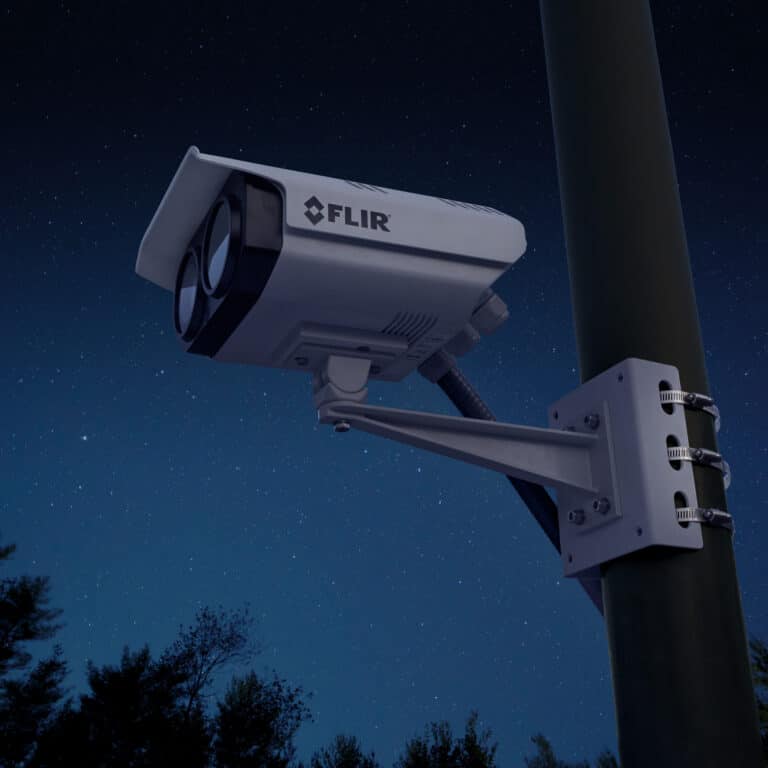ISJ Exclusive: Multi-layer perimeter protection for oil and gas refineries


James Thorpe
Share this content
At every stage of production, oil and gas infrastructure is vulnerable to physical security risks.
Everything from drone attacks, terrorism, vandalism, sabotage and regional wars represent an imminent threat to each sector within the oil and gas industry.
In the upstream sector, for example, on-and-offshore oil rigs face the risk of small boats or swimmers that might approach their perimeter undetected. In the midstream sector, an attack on any pipeline segment could lead to extensive environmental damage. Oil refineries in the downstream sector, however, represent perhaps the most complex security challenge – for integrators and end users alike.
The complexity of oil refinery security
Oil refineries are highly valuable assets worth hundreds of millions to multiple billions of pounds; in part because of the high capital cost of building a refinery, but also because of the high cash flows that an operating refinery generates. Therefore, protecting them from all potential threats requires the highest level of security and perimeter defence.
Because some oil refineries produce up to 1.2 million barrels per day, the petrochemical complexes that house them often span thousands of kilometres. From a perimeter security perspective, securing a facility that large introduces several complexities. Not only does it entail accounting for numerous access points, but it also requires monitoring wide open areas – both within and beyond the fence line – in order to provide robust intrusion detection at the perimeter.
Refineries require a best-in-class perimeter intrusion detection system (PIDS), one that can detect, classify and deter potential threats long before they reach the perimeter. To achieve this, one of the best available strategies is to create a multi-layered PIDS that brings together the most advanced sensors and management software available.
The power of multi-layered PIDS
Today’s leading PIDS are purpose-built to pre-empt and disrupt potential perimeter intrusions. These end-to-end systems layer perimeter surveillance devices, such as multispectral cameras, video analytics, radar, pan-tilt-zoom cameras and command and control software, to form one modular, interoperable and reliable system that delivers sensor redundancy for extensive situational awareness.
The most powerful multi-layered PIDS, today, integrate multiple, complementary sensors for the most reliable threat recognition and response that not only streamlines intrusion detection, visual verification and threat mitigation, but also represents an investment in a system that is built to evolve as future threats emerge. By unifying device management under one centralised management interface, multi-layered PIDS offer operators effortless administration, consistent performance and peace of mind. Here is an exploration into each component of a multi-layered PIDS designed to protect oil refineries:
Component one: Fixed multispectral cameras
At the fence line, multispectral cameras provide two critical functions for a multi-layered PIDS. First, because these devices utilise both thermal and visible sensors, they detect humans, vehicles and objects in the most challenging environmental conditions, from low visibility scenarios to complete darkness. Additionally, because thermal cameras measure minute differences in heat signatures, they also ensure optimal video analytics performance around the clock.
Beyond intrusion detection, the visible sensor component of multispectral cameras offers security operators the ability to further assess targets. While highly sensitive thermal sensors are designed to provide accurate detection and classification of humans and vehicles in the harshest conditions, high-resolution visible sensors enable threat identification for greater situational awareness, empowering security operators to distinguish whether the human approaching is an unauthorised individual or an employee who forgot their ID badge.

Component two: Convolutional neural network analytics
On their own, multispectral cameras represent some of the most advanced PIDS devices available. What makes them powerful, however, is the video analytics built into them.
In the world of intrusion detection, there are generally two applications for artificial intelligence and machine learning. The first is pixel-based motion-based analytics, which trigger alerts based on a percentage of pixels that change in an image within defined borders. The second involves software that replicates neurobiological systems, comparing objects within a camera’s field of view to tens of thousands of related images, in order to determine the location and classification of objects of interest. Using the latter method, convolutional neural network (CNN)-based analytics not only equip security personnel to detect intruders but also to classify detected intruders in real time, geo-locate intruders on a map and track them as they change position.
Combined with video management software (VMS), CNN-based analytics can stream a target’s position, speed and heading as metadata to networked devices, initiating slew-to-cue functionalities in PTZ cameras as well as dynamic target mapping capabilities using command and control software. Because these analytics rely on object classification for detection, as opposed to motion, they also filter out common sources of noise and other non-threats in order to reduce the rate of false alarms. Over time, operators can also update these neural networks in an iterative process, uniquely targeting a specific application.
Component three: Radar
Multispectral cameras and CNN-based analytics deliver robust intrusion alerts, object classification and visual verification. A vital sensor that enable multi-layered PIDS position intelligence is radar technology.
Designed to provide security operators with early warning of intruders as part of a video surveillance system, radars are built to detect and track targets in all weather and lighting conditions. With range options that can extend from hundreds to thousands of meters, these devices provide wide-area protection and situational awareness far beyond the fence line. Integrating radar’s geolocation capabilities into a multi-layered PIDS can also enable operators to track dozens of targets at once, maximising security coverage and empowering operators to quickly respond to threats from the ground and sky.
Component four: PTZ cameras
To protect a refinery from coordinated assaults, integrating PTZ cameras alongside fixed cameras and ground-based radar allows operators to detect, track and map multiple targets at once. Most importantly, PTZ cameras enable multiple hand-offs. After a target has detected by radar and its geolocation metadata has been transmitted, a multi-layered PIDS VMS can tell an integrated PTZ camera exactly where to aim, guaranteeing fewer hand-offs from one target tracking sensor to another and eliminating the chance of a lost visual on target.
Component five: Command and control software
Managing devices for multiple sensor types and aggregating all of the sensor data in a multi-layered system can be a challenge. However, highly customisable and user friendly command and control systems enable operators to control virtually any number and combination devices with point and click simplicity in a single interface, streamlining alarm response and optimising threat mitigation.
Deploying an architecture that is built to grow alongside a PIDS, as needs evolve – adding new devices using IP connectivity without modifying the core software – is also critical to supporting bi-directional communication between devices across an entire facility for reliable situational awareness, no matter the size of the refinery.
Key takeaways
As threats arise, an oil refinery’s ability to detect, identify and deter potential threats will come down to its intrusion detection system. To build a PIDS that is prepared to address every scenario, the most reliable devices a facility can integrate will be those that have been proven to perform, regardless of adverse weather or lighting scenarios. Likewise, the most dependable systems are those that take advantage of each of its component’s strengths, bringing them together to form one modular, scalable and reliable system that guarantees redundancy and extends situational awareness beyond the fence line.

By Harry Jackman, Director of Sales Security, EMEA Region, Teledyne FLIR
This article was originally published in the February 2023 edition of International Security Journal. To read your FREE digital edition, click here.



